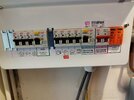First of all, which country are you in?
I see you are showing the Union Flag so that narrows it down a bit but whether you in Wales or England alters it a bit because Part P applies in both countries but England relaxed some rules a few years back. If you are in Wales it is notifiable works whilst in England it is not nowadays.
Providing, of course that you are not creating a new circuit.
Scotland and Northern Ireland have different rules.
Scotland, like England and Wales relies on the IET Wiring Regulations also known as BS7671. Whilst it is not actually law to obey it then we all should, almost invariably, obey it.
I am not 100% sure what laws/rules apply in Northern Ireland but I suspect obeying BS7671 might apply, others on here will no doubt have better information on NI.
In so far as BS7671 applies then your socket you intend to tap off could be one of three types as far as the existing wiring is concerned.
1/ on a radial circuit (usually 2.5 Twin and Earth or greater). Normally with a 15/16/20 amp fuse or breaker at the consumer unit.
2/ On a ring Final Circuit (sometimes incorrectly called a ring main). Normally a complete ring "daisy chain" from consumer unit and back in sequence.
3/ A spur, spurs are usually connected to a ring final circuit but can be from a radial either.
On a radial circuit (including any spur on a radial circuit) it is permissible to wire to any new socket directly unless there is a specific need to fuse down (this is usually achieved via a Fused Connection Unit or a Switched Fused Connection Unit - often these units are incorrectly termed a a "spur" because they are often traditionally found on a spur but really it is the wiring itself which is actually a spur or not, not the connection unit itself.
If a spur is fed from a ring final circuit then additional rules apply.
a spur may be connected directly at the origin of the circuit (the "fuseway") really should be the only conductor in that fuseway besides the two conductors comprising the ring final itself. Using a minimum of 2.5 T & E cable and connecting one single or one twin socket.
Instead you could connect it to the input side of a Fused Connection Unit and then on the output side connect as many sockets as you like because the total limit of current will be 13 amps or less.
In a similar fashion you could connect your spur to any socket on the ring providing that the existing socket is not on a spur itself.
And again you could connect your spur directly to the ring itself (example by using a junction box).
It is considered not best practice to not have more spurs on a ring than items actually on a ring properly but I would not worry too much about that.
I would advise using one of the better known more established makes of outside socket, example "BG".
I would also advise using a double pole switch inside the premises to break the supply to the outside socket in case of damage and water ingress (or if you want to avoid the chance of some miscreant using your electric whilst you away from home for long periods).
Finally, I am assuming your existing circuit is up to speed with modern wiring RCDs etc etc before you attempt any additions or alterations and you hasve the knowledge to do safely.



